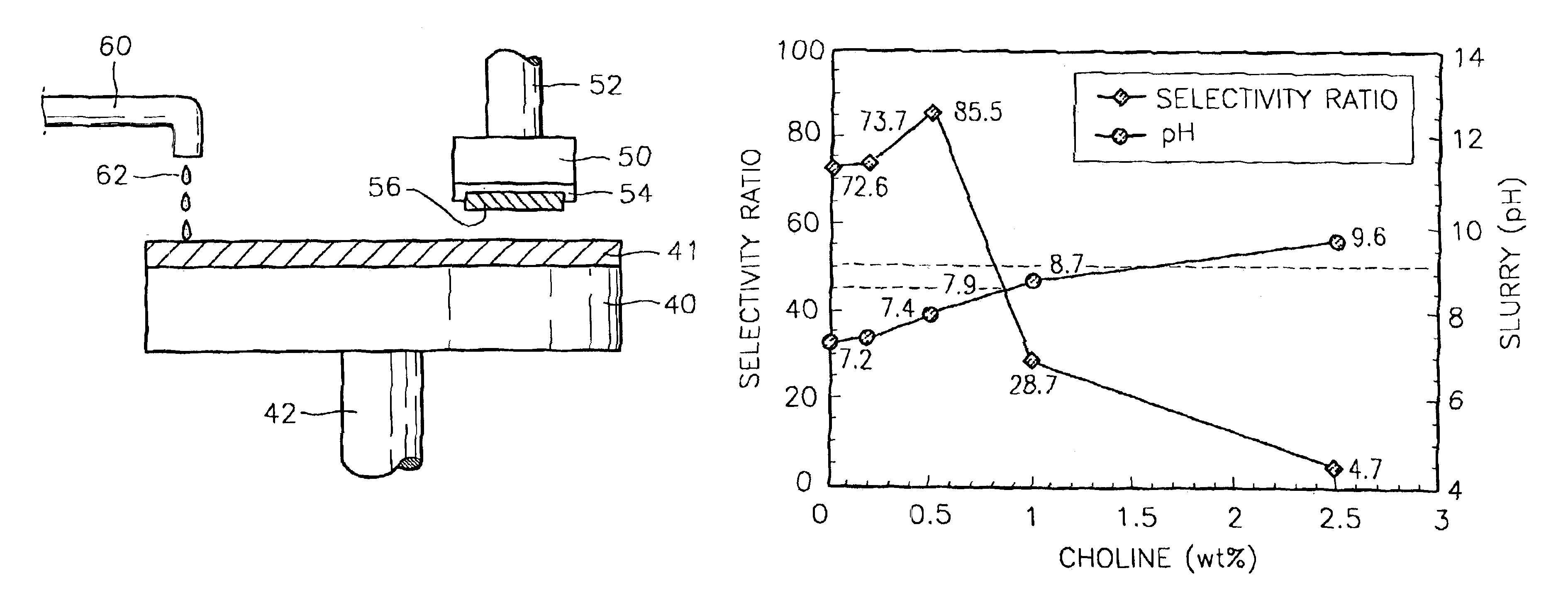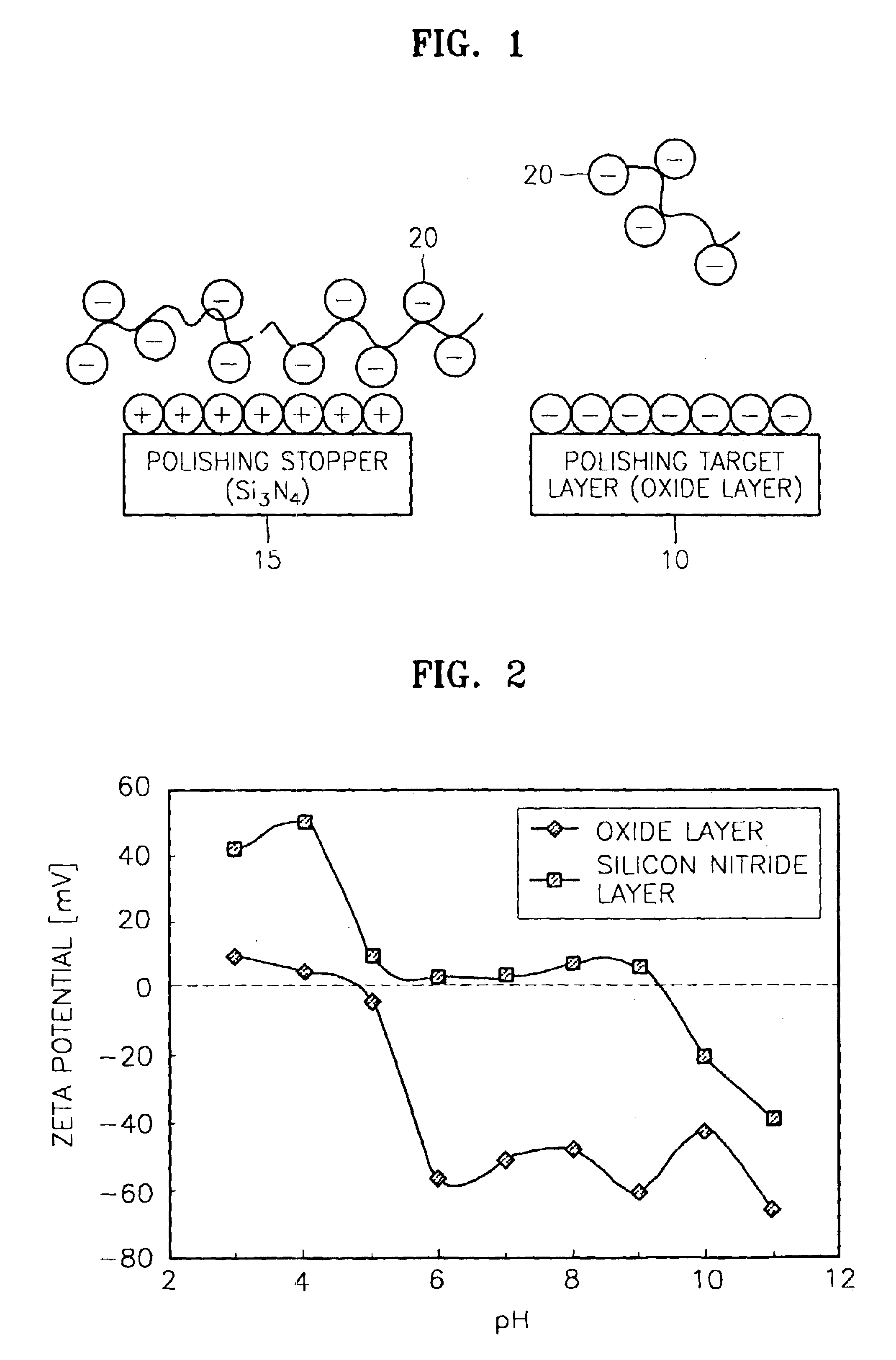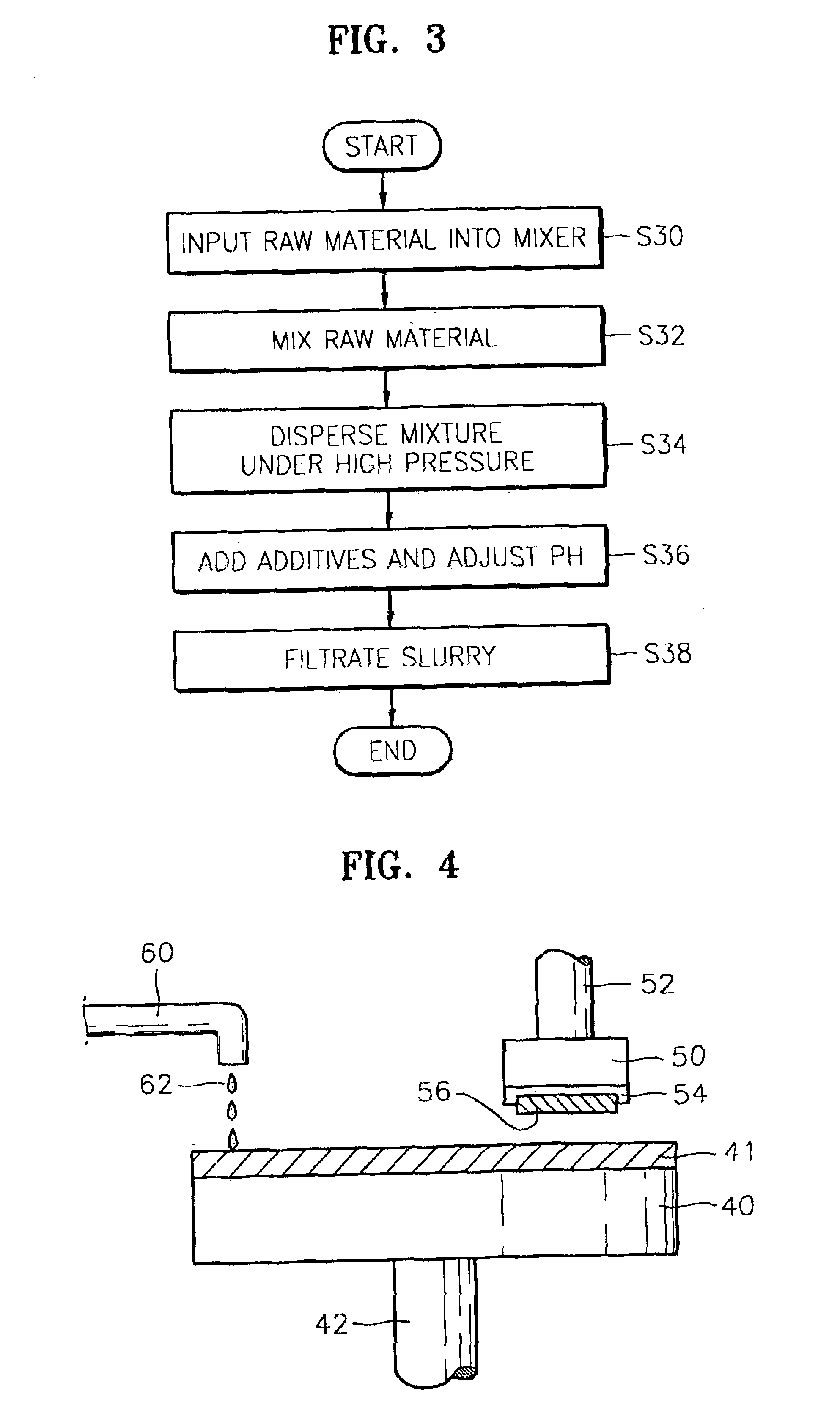Chemical mechanical polishing slurry and chemical mechanical polishing method using the same
- Summary
- Abstract
- Description
- Claims
- Application Information
AI Technical Summary
Benefits of technology
Problems solved by technology
Method used
Image
Examples
experimental example 1
[0063]In this experiment, using the method of FIG. 3, a plurality of slurries were prepared including 1 wt % of ceria as metal oxide abrasive particles and ammonium polycarboxylate (APC) as an anionic polymer passivation agent, while varying the content of the APC.
[0064]A blanket substrate having a PE-TEOS layer with a thickness of 10,000 A and a blanket substrate having a silicon nitride layer (Si3N4) with a thickness of 20,000 Å were prepared as test samples.
[0065]Referring to Table 1, a CMP process was performed to the test samples using the slurries having varying amounts of APC, and the removal rate and oxide to nitride selectivity ratio was measured. In this case, CMP was performed under a down pressure of 4 psi and at a table speed of 77 rpm using Mirra equipment having an IC1000 upper pad and Suba4 subpad, which is manufactured by AMAT. The results are shown in Table 1, and FIG. 6 graphically illustrates the results in Table 1.
[0066]
TABLE 1removal rate (Å / min)content of APCo...
experimental example 2
[0069]In this experiment, using the method of FIG. 3, slurries were prepared by varying the amount of ceria metal oxide abrasive particles, 1 wt % and 5 wt %, while varying the concentrations of APC, 0 wt % and 0.8 wt %. An oxide layer (PE-TEOS) blanket substrate and a silicon nitride layer (Si3N4) blanket substrate (the same substrates as those used in Experimental Example 1) were prepared as test samples. CMP was performed on the test samples using the prepare slurries and the results are shown in Table 2.
[0070]
TABLE 2removal rate (Å / min)oxide layersilicon nitrideselectivityceria (wt. %)APC (wt. %)(PE-TEOS)layer (Si3N4)ratio104716954 4.9:10.846188952.2:15083721686 5.0:10.8686910863.5:1
[0071]As shown in Table 2, as the content of the abrasive particles increases, the removal rates of the oxide layer and silicon nitride layer increase, and a low selectivity ratio for the case with no added APC is under 5:1. When an amount of 0.8 wt % of APC is added to the slurry, the removal rate o...
experimental example 3
[0072]In this experiment, using the method of FIG. 3, a plurality of slurries were prepared including 1 wt % of ceria and 1 wt % of APC, while adjusting the pH of the slurries to 7.5 by adding basic additives, such as KOH, TMAH, and choline. The test samples prepared were the same as those in Experimental Example 1.
[0073]After performing a CMP process using the prepared slurries and test samples, the oxide to nitride selectivity ratios were measured. In this case, the CMP process was performed under a down pressure of 5 psi and at a table speed of 65 rpm using equipment having an IC1000 upper pad and Suba4 sub pad, which is manufactured by Presi. The results are illustrated in Table 3.
[0074]
TABLE 3basic additivepH of slurryselectivity ratioNone7.21KOH7.51.08TMAH7.51.17Choline7.51.18(Note: the selectivity ratios in Table 3 are normalized values when a selectivity ratio without the basic additive, which is 50:1, is taken for 1)
[0075]When a base is added to the slurries having a high ...
PUM
| Property | Measurement | Unit |
|---|---|---|
| Percent by mass | aaaaa | aaaaa |
| Percent by mass | aaaaa | aaaaa |
| Percent by mass | aaaaa | aaaaa |
Abstract
Description
Claims
Application Information
 Login to View More
Login to View More - R&D
- Intellectual Property
- Life Sciences
- Materials
- Tech Scout
- Unparalleled Data Quality
- Higher Quality Content
- 60% Fewer Hallucinations
Browse by: Latest US Patents, China's latest patents, Technical Efficacy Thesaurus, Application Domain, Technology Topic, Popular Technical Reports.
© 2025 PatSnap. All rights reserved.Legal|Privacy policy|Modern Slavery Act Transparency Statement|Sitemap|About US| Contact US: help@patsnap.com



